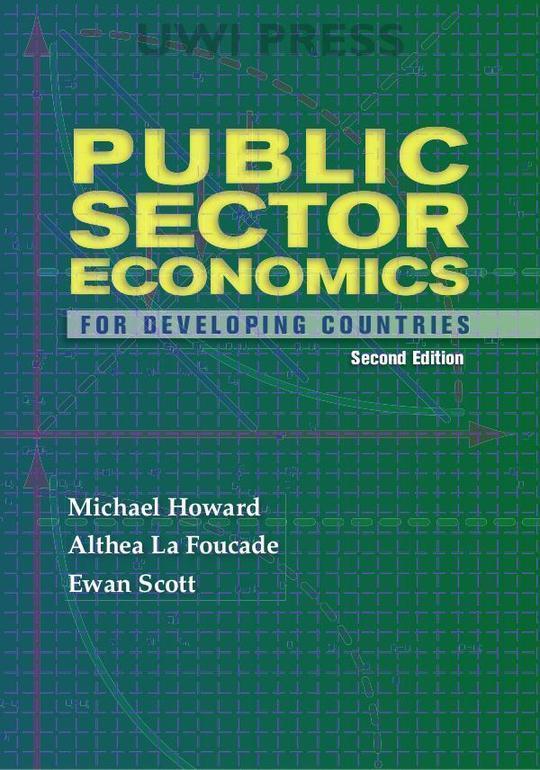
A Practical Introduction to Econometric Methods: Classical and Modern
US$ 9.99
The publisher has enabled DRM protection, which means that you need to use the BookFusion iOS, Android or Web app to read this eBook. This eBook cannot be used outside of the BookFusion platform.
Description
Contents
Reviews
Language
English
ISBN
9789766409449
Contents
Foreword
Preface
Introduction
Introduction
Classical and Modern Econometrics
Exercises
Part I: Classical
Chapter 1: The General Linear Regression Model
Models in Economics and Econometrics
Data and Econometric Models
Specifying the Model
Introducing the Error Term
Desirable Properties of the Error Term
The General Linear Regression Model
Ordinary Least Squares
Special Case: k = 2 and x1t = 1 for all t
Numerical Calculation
Forecasting with Econometric Models
The Gauss-Markov Theorem on Least Squares
Proof of Part (1) of the Theorem
Proof of Part (2) of the Theorem
Proof of Part (3) of the Theorem
Understanding the Lessons of the Gauss-Markov Theorem
Exercises
Appendix 1.1: Moments of First and Second Order of Random Variables and Random Vectors
Random Variables
Random Matrices and Vectors
Application to the General Linear Regression Model
Appendix 1.2: Time Series Data for Trinidad and Tobago 1967-1991
Chapter 2: Evaluating the Ordinary Least Squares (OLS) Regression Fit
Some Preliminary Remarks
The Coefficient of Determination and the Adjusted Coefficient of Determination
Confidence Intervals for Coefficients
Significance Tests of Coefficients
Testing the Simultaneous Nullity of the Slope Coefficients
“Economic” Evaluation of Regression Results
Reporting Regression Results
Exercises
Chapter 3: Some Issues in the Application of the General Linear Regression Model
Multicollinearity: the Problem
Multicollinearity: Detection
Multicollinearity: a Solution?
Multicollinearity: an Illustration
Misspecification
Dummy Variables
Illustration Involving a Dummy Variable
Exercises
Chapter 4: Generalized Least Squares, Heteroscedasticity and Autocorrelation
Generalized Least Squares
Properties of the Generalized Least Squares Estimator
Consequences of Using Ordinary Least Squares When u ~ (0, s2V)
GLS Estimation: a Practical Solution?
Ad Hoc Procedures for the Identification of Heteroscedasticity and Autocorrelation
Heteroscedasticity: Some Further Considerations
Heteroscedasticity: Testing for its Presence
The Goldfeld-Quandt Test
The Koenker Test
Illustration of the Koenker Test for Heteroscedasticity
Other Tests for Heteroscedasticity
Estimation in the Presence of Heteroscedasticity
Autocorrelation: The Problem
Autocorrelation: Testing for its Presence Using the Durbin-Watson Statistic
Some Justification for the Mechanism of the Durbin-Watson Test
An Illustration of the Durbin-Watson Test for Autocorrelation
Other Tests for Autocorrelation
Estimation in the Presence of Autocorrelation
The Cochrane-Orcutt Procedure
The Hildreth-Lu Procedure
The EViews Procedure
Autocorrelation and Model Specification: a Word of Caution
Exercises
Chapter 5: Introduction to Dynamic Models
Dynamic Models
Almon’s Polynomial Distributed Lag (PDL) Scheme
Illustration of Almon’s Polynomial Distributed Lag Scheme
The Koyck Transformation
Illustration of the Koyck Transformation
The Partial Adjustment Model
The Adaptive Expectations Model
Error Correction Mechanism (ECM) Models
Illustration of the Error Correction Mechanism Model
Autoregressive Distributed Lag (ADL) Models
Illustration of the Autoregressive Distributed Lag Model
The Durbin Test for Autocorrelation in the Presence of Lagged Endogenous Variables
Illustration of the Durbin h-Test
Exercises
Chapter 6: The Instrumental Variable Estimator
Introduction
Consistent Estimators
Is OLS Consistent?
The Instrumental Variable Estimator
The Errors in Variables Model
Exercises
Chapter 7: The Econometrics of Simultaneous Equation Systems
Introduction
Identification
Identifiability of an Equation and Restrictions on the Structural Form
Conditions of Identifiability of an Equation
Estimation in Simultaneous Equation Models
Consistency of the Two Stage Least Squares Estimator
The Two Stage Least Squares Estimator as an Instrumental Variable Estimator
Equivalence of Two Stage Least Squares and Indirect Least Squares in the Case of an Exactly Identified Equation
Illustration of the Two Stage Least Squares Estimator
Exercises
Chapter 8: Simulation of Econometric Models
Introduction
Dynamic and Static Simulation
Some Useful Summary Statistics
Root Mean Square Error
Mean Absolute (or Mean Difference) Error
The Theil Inequality Coefficient
The Theil Decomposition
Regression and Correlation Measures
Some Illustrations of the Use of Model Simulation
Evaluation of Goodness-of-Fit of Single Equation Systems
Forecasting with Single Equation Systems
Evaluation of Goodness-of-Fit of Multiple Equation Systems
Dynamic Response (Multiplier Analysis) in Multiple Equation Systems
Illustration of Dynamic Response
Forecasting and Policy Simulations with Multiple Equation Systems
Illustration
Exercise
Part II: Modern
Chapter 9: Maximum Likelihood Estimation
Introduction
The Cramer-Rao Lower Bound (CRLB)
Properties of Maximum Likelihood Estimators
Maximum Likelihood Estimation in the General Linear Regression Model
Exercises
Chapter 10: The Wald, Likelihood Ratio and Lagrange Multiplier Tests
Introduction
Defining Restrictions on the Parameter Space
The Likelihood Ratio Test
The Wald Test
The Lagrange Multiplier Test
Illustration: Test of Parameter Redundancy
Illustration: Testing Restrictions on Coefficient Values
Conclusion
Exercises
Chapter 11: Specification (and Other) Tests of Model Authenticity
Introduction
Ramsey’s RESET Test for Misspecification (Due to Unknown Omitted Variables)
Illustration of the Ramsey RESET Test
The Jarque-Bera Test for Normality
Illustration of the Jarque-Bera Test for Normality
The Ljung-Box and Box-Pierce Tests for White Noise
Illustration of the Ljung-Box Test
The White Test for Heteroscedasticity
Illustration of the White Heteroscedasticity Test
The Breusch-Godfrey Test for Serial Correlation
Illustration of the Breusch-Godfrey Test for Serial Correlation
The Chow Test for Structural Breaks
Illustration of the Chow Test for Structural Breaks
Exercises
Chapter 12: Stationarity and Unit Roots
The Concept of Stationarity
Unit Roots: Definition
Looking for Unit Roots: an Informal Approach
Formal Testing for Unit Roots
Exercises
Chapter 13: An Introduction to ARIMA Modelling
Introduction
ARIMA Models
Autoregressive Processes of Order p AR(p)
Moving Average Processes of Order q MA(q)
Autoregressive Moving Average Processes of Order p, q ARMA(p, q)
Autoregressive Integrated Moving Average Processes of Order p, d, q ARIMA(p, d, q)
The Partial Autocorrelation Function (PACF)
Estimating the Autocorrelation and Partial Autocorrelation Functions
Estimation of the Mean
Estimation of the Autocovariance of Order k
Estimation of the Autocorrelation of Order k
Estimation of the Partial Autocorrelation of Order j
Sampling Distributions of and
The Box-Jenkins Iterative Cycle
Identification
Illustrating the Identification of p and q
Estimation and Diagnostic Checking
Illustration of the Estimation and Diagnostic Checking Phases
Forecasting
Illustration of the Forecasting Phase
Seasonal Models
Exercises
Appendix 13.1
Chapter 14: Vector Autoregression (VAR) Modelling with Some Applications
Introduction
Vector AutoregressiON Models
Illustration of vector autoregression estimation using eviews
Evaluation of Vector Autoregression Models
The Impulse Response Function
Variance Decomposition
Forecasting with Vector Autoregression Models
Illustration of Forecasting with Vector Autoregression Models
Vector Autoregression Modelling and Causality Testing
Testing for Causality
Direct Granger Tests
Illustration of Direct Granger Tests
The Sims Test
Exercises
Appendix 14.1
Chapter 15: Cointegration
Introduction
The Vector Error Correction Model (VECM)
The Engle-Granger (EG) Two-Step Procedure
Illustration of the Engle-Granger Two-Step Procedure
Strengths and Weaknesses of the Engle-Granger Two-Step Procedure
The Johansen Procedure
Estimation of a and b
Testing for the Cointegrating Rank r
Illustration of the Johansen Procedure
Cointegration and Causality
Exercises
Appendix 15.1: Critical values for ADF tests of cointegratability
(constant term included in test equations)
Appendices
Statistical Tables
References
Index
Untitled
The book hasn't received reviews yet.











